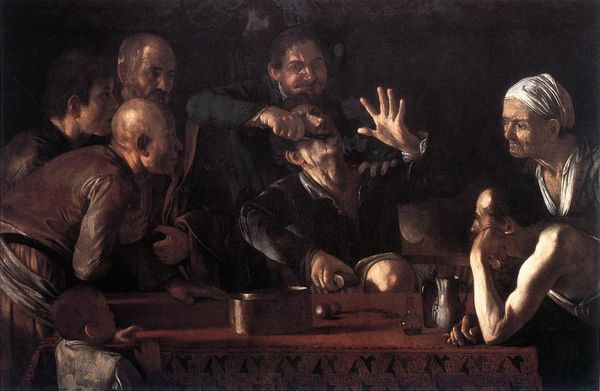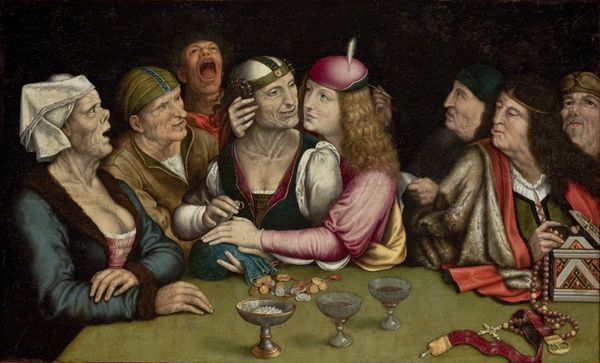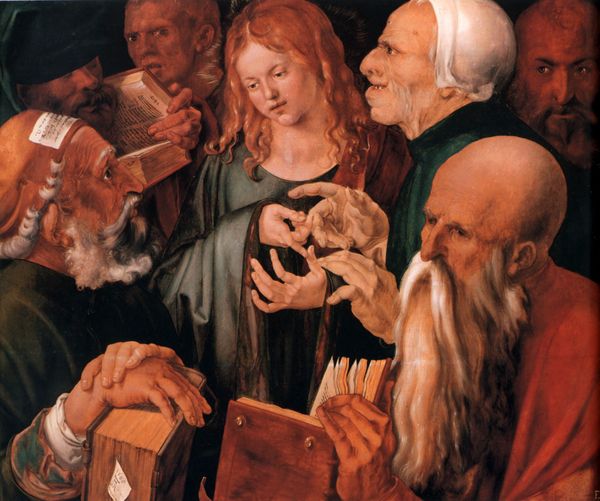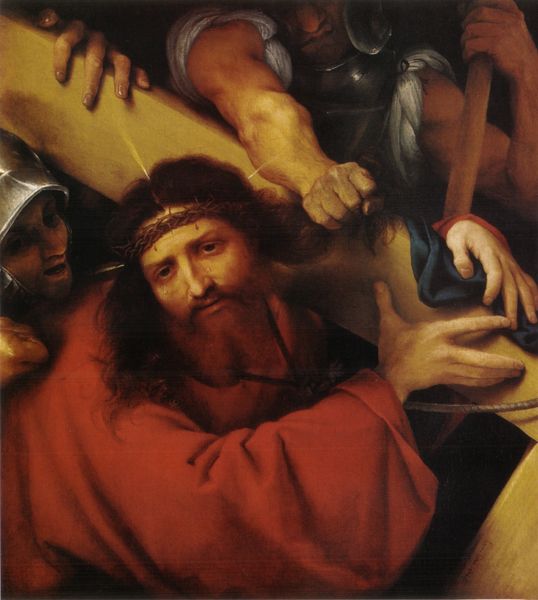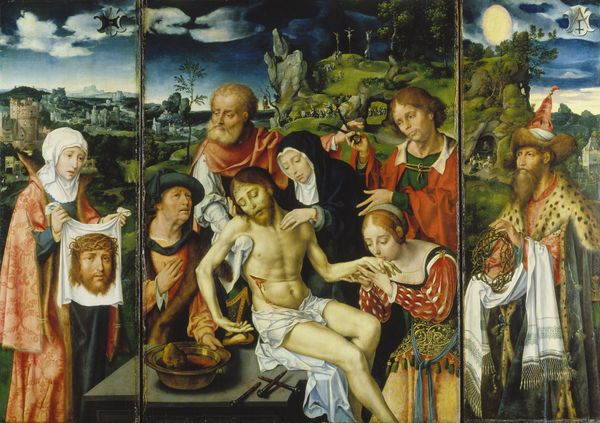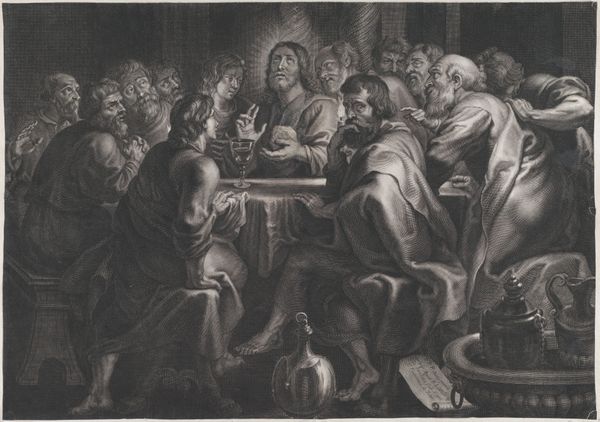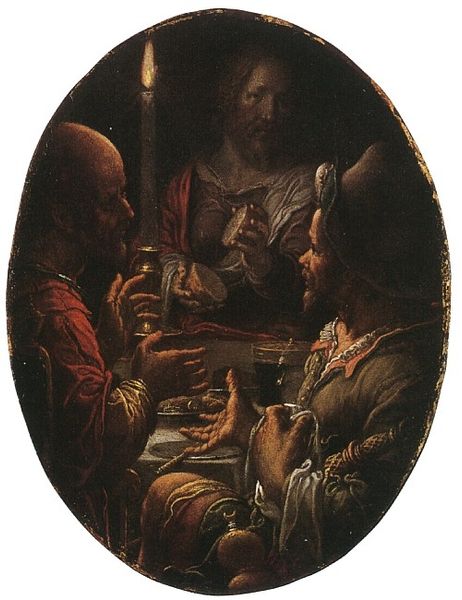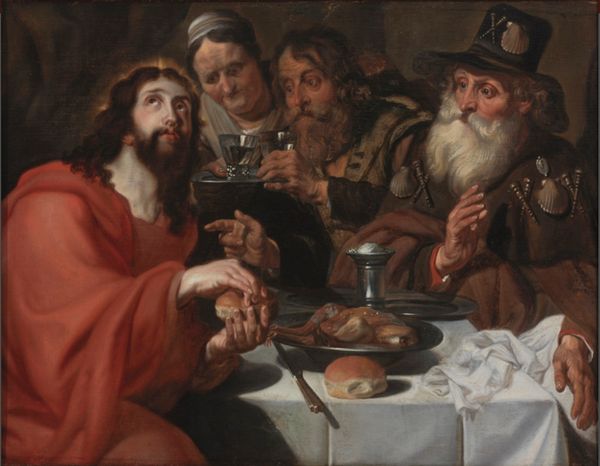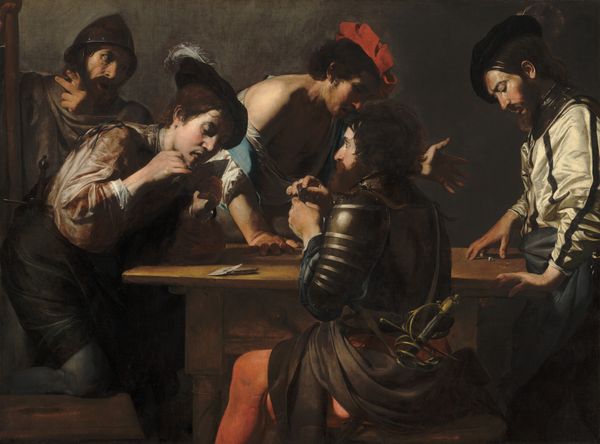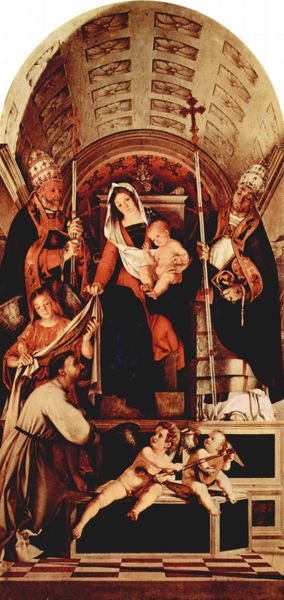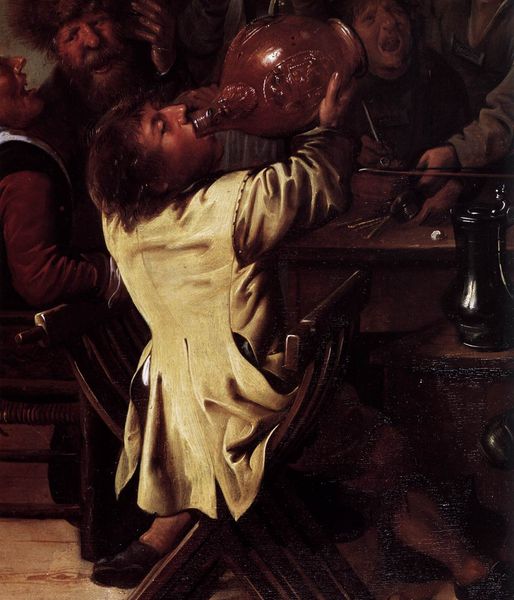
painting, oil-paint
#
painting
#
oil-paint
#
figuration
#
genre-painting
#
history-painting
#
northern-renaissance
Copyright: Public domain
Editor: We're looking at Hieronymus Bosch's "Christ Before Pilate," painted in 1516. The artist used oil paints to capture this moment, and the detail is striking. I am curious about the faces here. What draws your attention as an expert? Curator: The oil paint itself becomes crucial. Think about how the pigments are sourced, the labor involved in their preparation. The painting’s survival speaks to the economic and cultural capital invested in its materiality, doesn’t it? Also, the artist has clearly spent a long time carefully applying this medium; it seems the artist values time as something precious to the act of art creation. Editor: I didn’t think about it that way. It's fascinating to think of the oil paint not just as color, but as something carefully constructed. Do you feel the context affects your views on the painting? Curator: Absolutely. What were the prevailing economic models that allowed someone to commission, and Bosch to create such a detailed work? Who profits from such detailed depictions of a biblical scene like this? Does it support those in power? What kind of labor are those individuals in the crowd providing, and what were their skills to get to this place? Editor: I suppose it makes you question everything in the image – it's not just figures but all their actions! Now the piece seems like commentary on resource disparity, or rather what one needs in their "toolbox" to create in this society. Thanks for sharing such great ideas. Curator: And thank you! Reflecting on the relationship between art and society is, in the end, incredibly relevant.
Comments
No comments
Be the first to comment and join the conversation on the ultimate creative platform.
